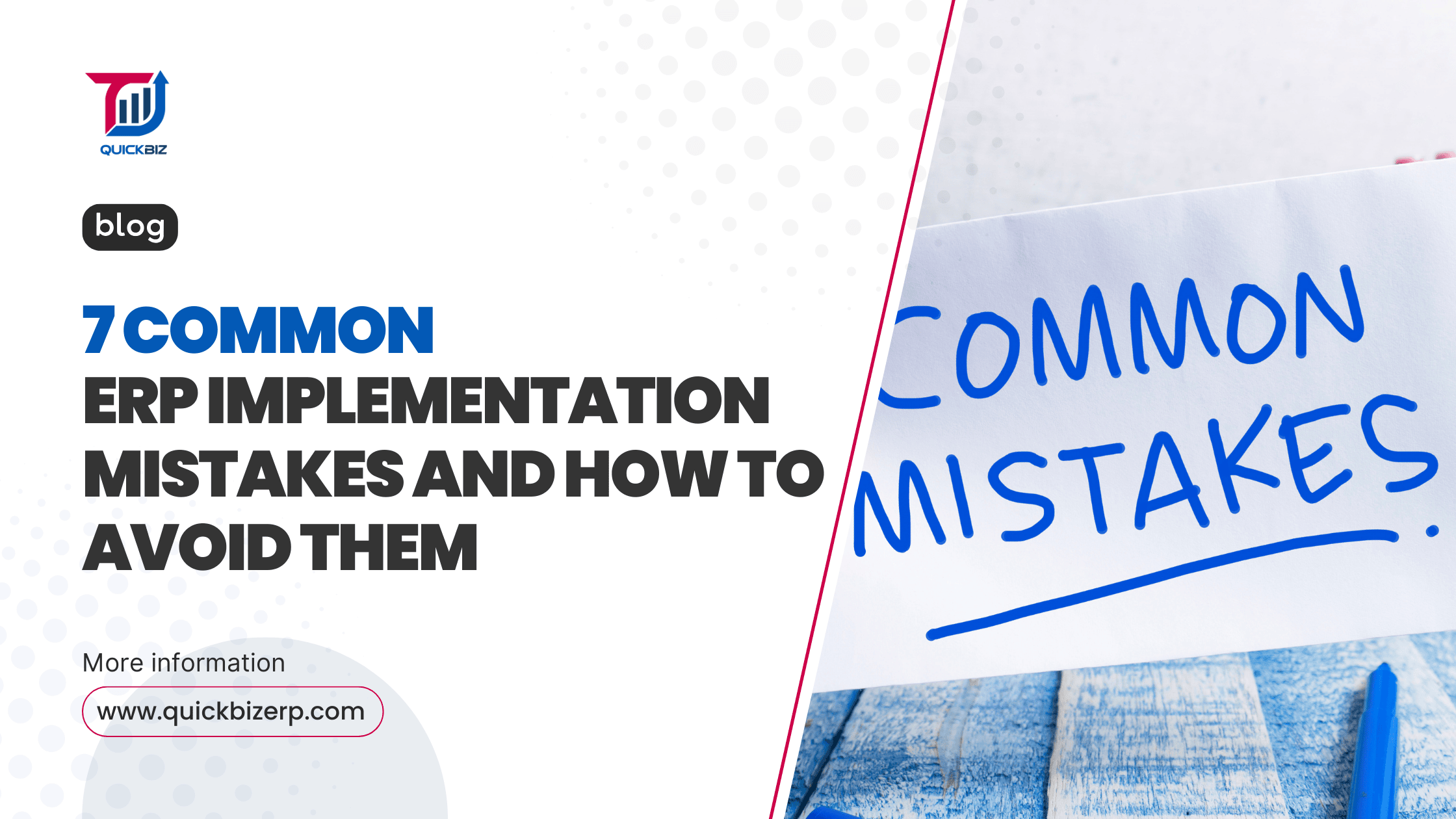7 Common ERP Implementation Mistakes and How to Avoid Them

Introduction
Implementing an ERP system is a game-changer for businesses, offering streamlined processes, improved efficiency, and better decision-making. However, without proper planning, ERP projects can derail, leading to missed deadlines, increased costs, and organizational chaos.
This blog highlights seven common ERP implementation mistakes and provides actionable tips to help businesses avoid these pitfalls and ensure a smooth, successful rollout.
1. Lack of Clear Goals and Objectives
Why It’s a Problem:
Starting an ERP implementation without well-defined goals is like setting out on a journey without a destination. Ambiguity in objectives can lead to misaligned priorities, wasted resources, and unclear project outcomes.
How to Avoid It:
- Clearly outline what you want to achieve (e.g., improved reporting, faster workflows).
- Set SMART (Specific, Measurable, Achievable, Relevant, Time-bound) objectives.
- Align goals with organizational priorities and communicate them to all stakeholders.
2. Poor Change Management
Why It’s a Problem:
ERP implementation introduces significant changes, often leading to resistance from employees. Poorly managed transitions can result in low adoption rates and reduced ROI.
How to Avoid It:
- Involve employees early in the process and communicate the benefits clearly.
- Appoint change champions to advocate for the new system.
- Provide ongoing support and address concerns proactively. Discover how to transition from chaos to clarity during ERP implementation.
3. Insufficient Training for Users
Why It’s a Problem:
Without proper training, employees may struggle to use the ERP system effectively, leading to errors, inefficiencies, and frustration.
How to Avoid It:
- Create a structured training program tailored to different user roles.
- Use hands-on workshops, tutorials, and user manuals.
- Monitor progress and offer refresher training sessions post-implementation.
4. Over-Customization of the ERP System
Why It’s a Problem:
Excessive customization increases costs, complicates updates, and makes the system harder to maintain.
How to Avoid It:
- Stick to standard ERP features as much as possible.
- Customize only when it aligns with critical business needs.
- Focus on adapting workflows to the ERP rather than altering the ERP to fit workflows. Check out key differences SMEs must know about ERP systemsto make informed decisions about customization.
5. Underestimating Data Migration Challenges
Why It’s a Problem:
Migrating outdated or incomplete data can disrupt operations and compromise decision-making.
How to Avoid It:
- Audit and clean your data before migration.
- Create a detailed data migration plan, including timelines and responsibilities.
- Test the migrated data thoroughly to ensure accuracy. Learn how to simplify ERP data migration challenges.
6. Neglecting Vendor Support and Expertise
Why It’s a Problem:
Overlooking the expertise of your ERP vendor can lead to underutilized features and delayed problem resolution.
How to Avoid It:
- Choose a vendor with a proven track record in your industry.
- Take advantage of training, support, and consulting services offered by the vendor.
- Maintain open communication with the vendor throughout the project lifecycle.
7. Ignoring Post-Implementation Evaluation
Why It’s a Problem:
Failing to review the system’s performance post-launch can lead to unresolved issues and missed opportunities for improvement.
How to Avoid It:
- Schedule regular performance evaluations using key metrics (e.g., system uptime, user adoption rates).
- Collect feedback from users to identify pain points.
- Continuously update and optimize the ERP system based on evaluation findings.
Conclusion
ERP implementation is a complex yet rewarding process when done right. By avoiding these seven common mistakes—such as poor planning, insufficient training, and neglecting vendor support—businesses can achieve a successful rollout that drives efficiency and growth.

